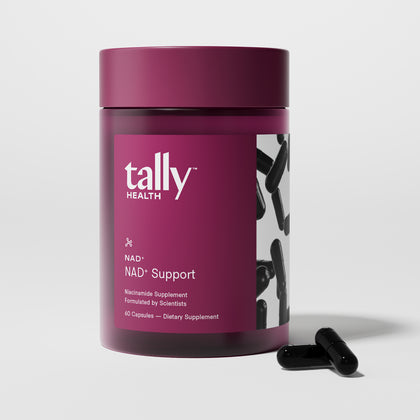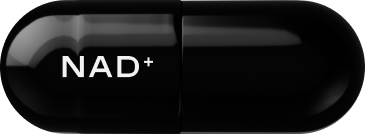

When we think about longevity, we often focus on how to extend our lifespan — the total years we live — and our healthspan — the years we live well. But there’s another frontier in the science of healthy aging: your skinspan.
Your skin healthspan refers to how long your skin stays strong, healthy, resilient, and youthful — not just in appearance, but in structure and function. After all, your skin isn’t just your body’s outer layer; it’s a dynamic organ that protects you from environmental stressors, regulates temperature, and plays a crucial role in immune defense and sensory perception.
So, what determines how well our skin ages — and what can we do to preserve its vitality from the inside out?
Understanding Aging Skin: Intrinsic and Extrinsic Factors

Skin aging consists of two overlapping processes:
Intrinsic skin aging, which reflects inherent biological components such as hormonal fluctuations, genetic predispositions, cellular senescence, and stem cell exhaustion.
Extrinsic skin aging, which results from environmental exposures like ultraviolet radiation, air pollution, poor nutrition, and smoking.
Together, these factors contribute to visible and physiological changes in the skin — from fine lines, pigmentation, and loss of elasticity to epidermal thinning and delayed wound healing.
On a cellular level, skin aging presents with features like genomic instability, telomere attrition, epigenetic alterations, and mitochondrial dysfunction — all of which impair cell renewal and reduce the skin’s capacity to repair itself.
Cellular Senescence and the Skin’s Microenvironment

One of the root causes of skin aging lies in irreversible cell cycle arrest, a state known as cellular senescence. Senescent cells stop dividing but remain metabolically active, releasing inflammatory molecules known as senescence-associated secretory phenotypes (SASPs).
Over time, this chronic low-grade inflammation accelerates aging phenotypes and alters intercellular communication, weakening the skin’s structure and barrier function.
Healthy skin depends on a resilient skin microenvironment — one where cells can renew, repair, and respond to stress efficiently. When that balance is disrupted, aging processes accelerate.
The Longevity Framework for Skin Aging

Recent research is beginning to frame skin health within the broader healthy longevity framework — connecting dermatologic science with molecular hallmarks of aging such as telomere attrition, mitochondrial dysfunction, and stem cell exhaustion.
By understanding these shared biological mechanisms, scientists can identify emerging therapies targeting root cause mechanisms of skin aging — rather than just treating surface-level symptoms.
This evolving framework for skin aging aims to maintain both skin structure and function relationships across the epidermal and dermal layers, supporting a stronger barrier, better hydration, and more youthful resilience as the global population ages.
Boosting Skinspan from the Inside Out

A truly effective skin longevity strategy targets both intrinsic and extrinsic factors. Here’s how to support your skinspan through daily habits and science-backed interventions:
1. Lifelong Sun Protection
Ultraviolet radiation remains the most potent extrinsic factor in skin aging. Daily use of a broad-spectrum sunscreen (with a sun protective factor equal to SPF 30 or higher) helps prevent DNA damage, collagen breakdown, and premature aging.
2. Nutritious Dietary Habits
A balanced diet rich in antioxidants, vitamins (especially C and E), and omega-3 fatty acids supports a healthy skin barrier and reduces oxidative stress. Poor nutrition can accelerate both superficial epidermal aging and deep dermal aging.
3. Cellular Support with NAD+ Precursors
Inside every cell, energy metabolism and repair depend on NAD+ — a coenzyme essential for mitochondrial function and cellular resilience. As we age, NAD+ levels naturally decline, impairing the body’s ability to counter oxidative damage and maintain youthful skin physiology.
That’s why supporting NAD+ production can be a key part of a longevity framework for skin.
NAD+ by Tally Health is formulated with 1000 mg of Niacinamide, a potent NAD+ precursor known for its skin health benefits. Niacinamide helps strengthen the skin barrier, reduce inflammation, and improve elasticity — making it one of the most effective nutrients for supporting skin healthspan at the cellular level.
4. Addressing Cellular Senescence
Emerging therapies — including senolytic and senomorphic approaches — aim to selectively clear or reprogram senescent cells, potentially reducing inflammation and improving the skin’s regenerative capacity. While still in early stages, this line of research could revolutionize dermatologic care.
5. Healthy Lifestyle and Sleep
Consistent exercise, quality sleep, and stress management promote optimal hormone balance and reduce chronic inflammation — both critical for preserving youthful skin function.
The Future of Skin Longevity

As the science of human aging evolves, the skin offers a visible window into cellular health and biological age. Researchers are now developing validated skin scoring systems and skin aging quality measurements to track progress and assess emerging interventions.
In the near future, skincare may move beyond cosmetic results to focus on true biological rejuvenation — integrating topical and nutritional approaches that target the skin’s root cause mechanisms.
Supporting your skinspan isn’t just about looking younger — it’s about maintaining your skin’s capacity to function like it did when it was younger.
For a simple, science-backed way to begin supporting your skin’s longevity from within, consider NAD+ by Tally Health, designed to restore your body’s cellular energy and help your skin stay resilient, hydrated, and youthful — for years to come.
References
Wyles et al. SkinspanTM: A Healthy Longevity Framework for Skin Aging. Mayo Clinc Proc 2025; https://doi.org/10.1016/j.mayocp.2025.07.027
Kream et al. Skinspan: A Holistic Roadmap for Extending Skin Longevity With Evidence-Based Interventions. J Cosmet Dermatol 2025; https://doi.org/10.1111/jocd.70432
Furman et al. Skin health and biological aging. Nat Aging 2025; https://doi.org/10.1038/s43587-025-00901-6
Hussein et al. Influences on Skin and Intrinsic Aging: Biological, Environmental, and Therapeutic Insights. J Cosmet Dermatol 2025; https://doi.org/10.1111/jocd.16688
Wang et al. Clinical evaluation of skin aging: a systematic review. Arch Gerontol Geriatr 2025; https://doi.org/10.1016/j.archger.2025.105995
What is skinspan?
Skinspan refers to how long your skin stays strong, resilient, healthy, and youthful — not just in appearance but in structure and function. It describes the healthspan of your skin, or how long it remains healthy and capable of renewal and repair as you age.
What causes skin aging?
Skin aging consists of two overlapping processes: intrinsic aging, which is influenced by genetics, hormonal fluctuations, and cellular senescence, and extrinsic aging, which results from environmental factors like ultraviolet radiation, air pollution, poor nutrition, and smoking. Together, these contribute to visible and physiological changes such as fine lines, loss of elasticity, and delayed wound healing.
How can I improve my skin’s healthspan?
You can support your skin healthspan through lifelong sun protection, nutritious dietary habits, quality sleep, and cellular support. Supplementing with NAD+ by Tally Health, formulated with 1000 mg of Niacinamide, helps boost NAD+ levels and supports the skin barrier, elasticity, and cellular repair — key factors for long-term skin longevity.











